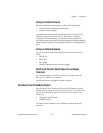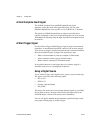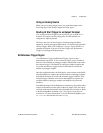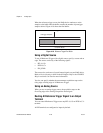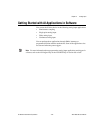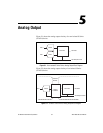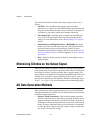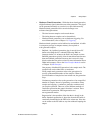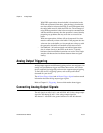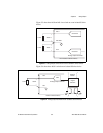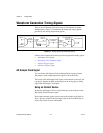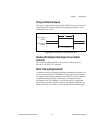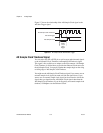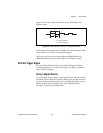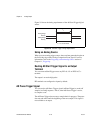
Chapter 5 Analog Output
NI 6124/6154 User Manual 5-4 ni.com
With FIFO regeneration, the entire buffer is downloaded to the
FIFO and regenerated from there. After the data is downloaded,
new data cannot be written to the FIFO. To use FIFO regeneration,
the entire buffer must fit within the FIFO size. The advantage of
using FIFO regeneration is that it does not require communication
with the main host memory after the operation is started, thereby
preventing any problems that may occur due to excessive bus
traffic.
With non-regeneration, old data will not be repeated. New data
must be continually written to the buffer. If the program does not
write new data to the buffer at a fast enough rate to keep up with
the generation, the buffer will underflow and cause an error.
– Non-Buffered—In hardware-timed non-buffered generations,
data is written directly to the FIFO on the device. Typically,
hardware-timed non-buffered operations are used to write single
samples with known time increments between them and good
latency.
Analog Output Triggering
Analog output supports two different triggering actions: start and pause. An
analog or digital hardware trigger can initiate these actions. All S Series
devices support digital triggering, and some also support analog triggering.
To find your device’s triggering options, refer to the specifications
document for your device.
The AO Start Trigger Signal and AO Pause Trigger Signal sections contain
information about the analog output trigger signals.
Refer to Chapter 11, Triggering, for more information about triggers.
Connecting Analog Output Signals
The AO signals are AO 0, AO 1, and AO GND. AO 0 is the voltage output
signal for AO channel 0. AO 1 is the voltage output signal for
AO channel 1. AO GND is the ground reference for the AO channels.



